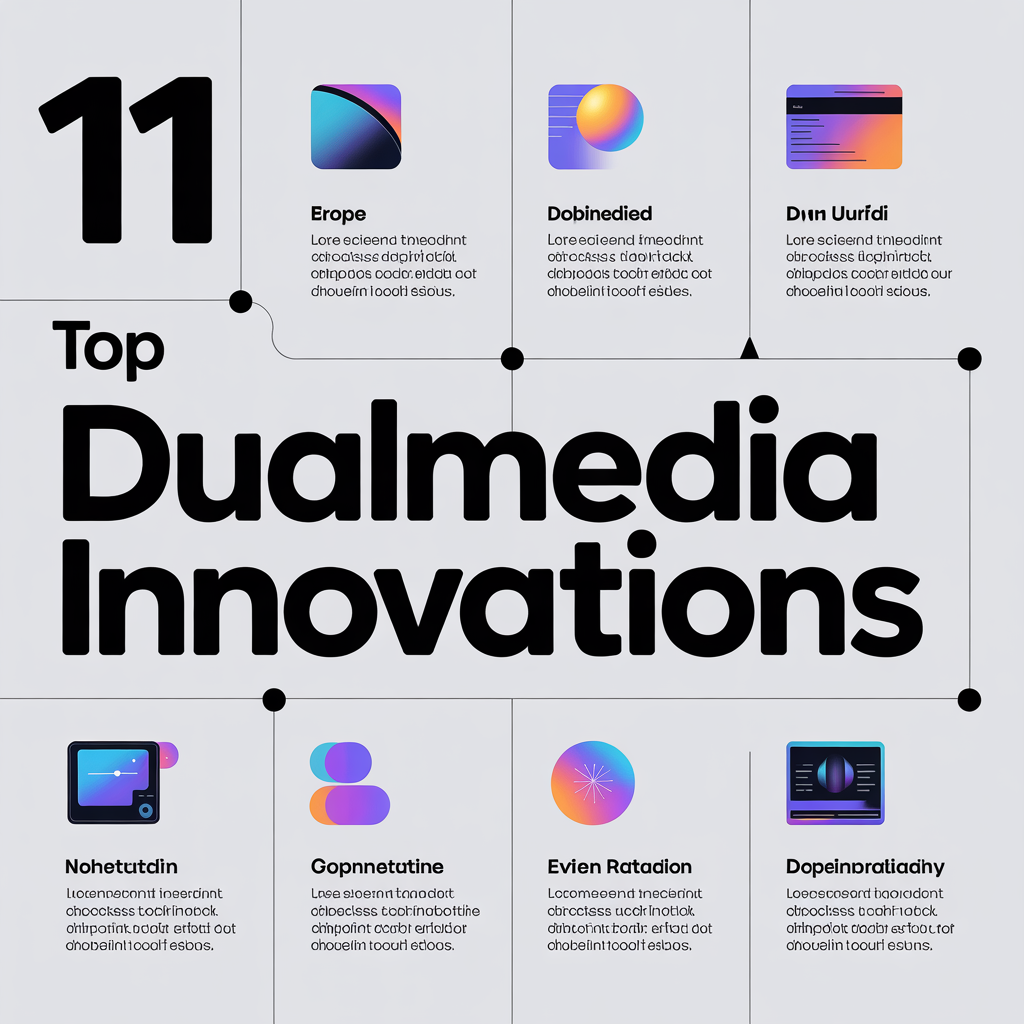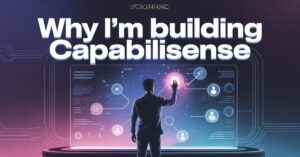Technology doesn’t wait for permission to transform everything we know.
DualMedia innovations are proving this truth daily as they bulldoze through traditional industry boundaries and rewrite operational playbooks across sectors.
From AI integration in cybersecurity to mobile banking innovations 2025, these advancements aren’t just incremental improvements they’re complete paradigm shifts.
Let’s explore the eleven most powerful technology innovation news stories that are actively reshaping how businesses operate and how consumers interact with digital ecosystems.
AI-Powered Cybersecurity Defense Systems
Traditional signature-based security feels like bringing a knife to a drone fight. Machine learning threat detection has fundamentally altered the cybersecurity landscape by identifying threats before they execute rather than after damage occurs.
Darktrace’s Enterprise Immune System operates like a digital antibody network. It learns normal network behavior patterns and spots anomalies in real-time.
The system detected an average of 97% of novel threats in 2024 testing threats that traditional systems completely missed because no signature existed yet.
CrowdStrike’s Falcon platform showcases predictive cybersecurity systems at their finest.
Response time dropped from industry-standard 207 days down to under 24 hours. That’s not optimization that’s revolution.
Here’s what separates modern AI in cybersecurity news from legacy approaches:
- Behavioral analytics replace rigid rule-based detection
- Autonomous response capabilities neutralize threats without human intervention
- Continuous learning algorithms adapt to evolving attack methodologies
- False positive reduction by 60-70% compared to traditional systems
Future technology predictions point toward quantum-resistant encryption becoming standard by 2027.
We’re also witnessing the emergence of AI vs. AI warfare scenarios where offensive and defensive systems engage in microsecond-speed battles invisible to human operators.
Conversational Commerce Through Mobile Platforms
Shopping through chat apps seemed gimmicky three years ago. Today? Mobile commerce evolution has made conversational commerce the fastest-growing retail channel with 48% year-over-year growth according to mobile commerce statistics 2025.
Social commerce platforms like Instagram and TikTok now process billions in native checkout transactions monthly.
The friction between “I want that” and “I bought that” has essentially disappeared. Users complete purchases without leaving their entertainment feeds.
Apple Pay and Google Wallet aren’t just payment methods anymore they’re complete commerce ecosystems.
Mobile wallet adoption reached 76% among smartphone users under 40 in North America.
These platforms integrate loyalty programs, receipts, and personalized offers seamlessly.
Augmented reality shopping bridges the digital-physical gap beautifully. IKEA’s AR app lets customers visualize furniture in their actual rooms before purchasing. Conversion rates jumped 35% when AR features launched.
Technology Stack Driving Mobile Commerce
Retail mobile optimization depends on several converging technologies:
| Technology | Function | Impact |
|---|---|---|
| Natural Language Processing | Voice-activated purchasing | 28% faster checkout |
| Payment Tokenization | Secure transaction processing | 94% fraud reduction |
| 5G Networks | Seamless real-time experiences | 3x faster load times |
| Edge Computing | Localized data processing | 50% latency reduction |
The average order value through conversational commerce exceeds traditional mobile shopping by 23%.
Customers making purchases through chat assistants spend more because recommendations feel personalized rather than algorithmic.
Algorithmic Trading and AI Financial Analysis
Wall Street runs on code now. Artificial intelligence in financial markets processes more trading decisions per second than human traders could execute in years.
High-frequency trading accounts for 60-73% of equity market volume in the United States alone.
AI-driven financial trading analyzes news sentiment, social media trends, economic indicators, and historical patterns simultaneously.
JPMorgan’s LOXM platform improved execution quality by 25% while reducing market impact costs significantly.
Algorithmic trading using AI delivers measurable advantages:
- Execution speed measured in microseconds
- Emotion-free decision making eliminates panic selling and FOMO buying
- Portfolio optimization through multi-variable analysis
- Risk assessment across thousands of scenarios simultaneously
BlackRock’s Aladdin platform manages over $21 trillion in assets. That’s not a typo trillion with a T.
The system provides financial market automation for risk analysis, portfolio construction, and trading operations at unprecedented scale.
Hedge fund AI strategies now dominate quantitative trading. Renaissance Technologies’ Medallion Fund achieved 66% average annual returns over three decades by leveraging mathematical models and AI in fintech capabilities that humans simply cannot replicate.
Dr. John Hull from the University of Toronto’s Rotman School notes: “AI hasn’t just improved trading efficiency it’s created entirely new markets and products that wouldn’t exist without machine learning capabilities.”
Intelligent Corporate Data Ecosystems
Data lakes used to be glorified storage dumps. Corporate data management revolution transformed them into intelligent ecosystems that deliver insights rather than just hoarding information.
Cloud computing adoption reached 94% among enterprises in 2024. But adoption alone doesn’t matter implementation quality does.
Companies leveraging data lakes and data analytics tools effectively see 5-8x return on their cloud investments.
Cloud data governance emerged as the make-or-break factor. GDPR and CCPA compliance can’t be an afterthought anymore.
Automated governance frameworks track data lineage, enforce access controls, and maintain audit trails without human oversight.
Snowflake revolutionized data analytics tools through its architecture that separates storage from compute.
Organizations pay only for resources used and can share data across organizational boundaries securely.
That’s solving problems that seemed impossible five years ago.
Tableau and Power BI AI integration brings analytics to business users rather than restricting insights to data scientists.
Natural language queries like “Show me last quarter’s top-performing products by region” generate visualizations instantly.
Measurable ROI from Modern Data Architecture
| Metric | Traditional Systems | Modern Cloud-Native |
|---|---|---|
| Time-to-Insight | 4-6 weeks | 2-4 hours |
| Infrastructure Costs | Baseline | 40-60% reduction |
| Data Scientist Productivity | Baseline | 3x improvement |
| Query Performance | Baseline | 10-50x faster |
Databricks Lakehouse architecture unified analytics and AI workloads on a single platform.
Data scientists and analysts work from identical datasets, eliminating version control nightmares and conflicting reports.
Next-Generation Mobile Banking Interfaces
Traditional banking apps felt like filling out forms underwater. Mobile banking innovations 2025 deliver experiences that rival consumer apps for smoothness and intuitiveness.
Biometric authentication in banking moved beyond fingerprint and facial recognition security.
Voice ID, behavioral biometrics, and even heartbeat patterns provide multi-layered verification without friction.
Bank of America’s Erica assistant handles 1.5 billion client requests annually through conversational AI.
Mobile banking apps user experience now incorporates predictive financial advice.
Algorithms analyze spending patterns and suggest specific actions: “You’re spending 23% more on dining this month. Want to set a reminder?” That’s actionable intelligence, not generic advice.
Chime disrupted traditional banking by eliminating fees entirely. Their mobile wallet adoption strategy attracted 14.5 million customers without a single physical branch.
Customer acquisition costs run 80% lower than traditional banks because the product sells itself through word-of-mouth.
Regulatory compliance in fintech shaped innovation significantly. Open banking API requirements in the EU and PSD2 compliance forced banks to share data with third parties securely.
That mandate accelerated emerging technology trends toward embedded finance banking capabilities integrated directly into non-banking apps.
Revolut’s super app strategy bundles banking, investing, cryptocurrency, and insurance into one interface.
Users manage their entire financial life without switching apps. Monthly active users exceeded 35 million globally by early 2025.
High-Profile Data Breach Response Protocols
Learning from disasters prevents future catastrophes. Data security breaches case studies provide brutal but necessary education about what happens when security fails.
The Equifax data breach compromised 147 million Americans’ personal information in 2017.
The attack exploited a known vulnerability that remained unpatched for months. Total costs exceeded $1.4 billion including settlements, remediation, and regulatory fines.
Yahoo security breach affected all 3 billion user accounts literally every single user. The attack occurred in 2013 but wasn’t disclosed until 2016.
That delay demolished trust and wiped billions off Yahoo’s acquisition value.
MOVEit Transfer vulnerability in 2023 cascaded through supply chains, impacting over 2,600 organizations.
The attack targeted a file transfer tool that many companies didn’t even realize was part of their infrastructure. That’s the insidious nature of third-party risk.
Actionable Prevention Strategies
Multi-factor authentication (MFA) blocks 99.9% of automated attacks according to Microsoft’s security research. Yet adoption remains embarrassingly low outside enterprise environments.
Cybersecurity advancements that actually prevent breaches:
- Zero-trust architecture assumes breach and verifies continuously
- Privileged access management restricts admin credentials strictly
- Security awareness training transforms employees from vulnerabilities into defenses
- Incident response planning reduces breach costs by average of $2.66 million
Norton and McAfee enhanced their mobile antivirus tools with AI-powered threat prediction.
These systems identify malicious behavior patterns rather than waiting for known malware signatures.
Ransomware and phishing threats evolved dramatically. Attackers now research targets extensively before launching campaigns.
Generic phishing gave way to spear-phishing with personalized details that bypass traditional filters.
Progressive Web Apps and Hybrid Platforms
App store gatekeeping strangled innovation for years. Mobile applications development trends shifted dramatically toward progressive web apps (PWAs) that bypass stores entirely.
App development frameworks Flutter, React Native and Capacitor enable developers to write code once and deploy everywhere. The native vs.
hybrid performance gap essentially vanished. Twitter’s PWA delivers identical functionality to native apps while requiring 75% less storage space.
Cross-platform mobile development slashed time-to-market by 40-60% compared to building separate iOS and Android apps.
Small teams now ship products that previously required entire departments.
UX/UI design trends prioritize speed and simplicity obsessively. Every additional tap or swipe reduces conversion rates measurably.
The best mobile experiences feel telepathic anticipating needs before users articulate them.
Push notification engagement walks a tightrope between helpful and annoying. Data shows that personalized notifications based on user behavior achieve 7x higher engagement than generic broadcasts.
Timing matters enormously notifications during commute hours perform 3x better than late-night messages.
Gamification in apps boosted retention when implemented thoughtfully. Duolingo’s streak counter and achievement badges increased daily active users by 50%. The key? Reward progress rather than perfection.
Geopolitical Cybersecurity Battlegrounds
Cyberspace became the fifth domain of warfare alongside land, sea, air, and space.
Political dimensions of cybersecurity now influence technology decisions as much as technical capabilities.
The Stuxnet virus cyberattack against Iranian nuclear facilities demonstrated that code could cause physical destruction.
That attack, widely attributed to US and Israeli intelligence, opened Pandora’s box. Nation-states realized cyberweapons deliver strategic impact without kinetic warfare.
International cybercrime collaborations remain frustratingly limited. Cybercriminals operate from jurisdictions that don’t extradite to victim countries.
Russia harbors ransomware gangs. North Korea sponsors cryptocurrency theft operations. China conducts intellectual property theft at industrial scale.
The NIST Cybersecurity Framework provides standardized guidelines that help organizations assess and improve security posture.
Adoption jumped 340% among critical infrastructure operators following high-profile attacks on Colonial Pipeline and JBS Foods.
US CHIPS Act invested $52 billion in domestic semiconductor manufacturing.
The legislation addresses cybersecurity advancements by reducing dependence on foreign supply chains that introduce security vulnerabilities at hardware level.
China’s cybersecurity regulations mandate data localization keeping Chinese user data on servers within Chinese borders.
That fragments the global internet and forces multinational corporations into impossible compliance situations.
Mobile-First Security Architecture
Mobile devices became primary computing platforms for billions worldwide. Yet mobile device security strategies lag dangerously behind desktop protections.
SIM swapping attacks bypass SMS-based two-factor authentication by convincing mobile carriers to transfer phone numbers to attacker-controlled devices.
That technique compromised high-profile cryptocurrency accounts and drained millions in minutes.
Fingerprint and facial recognition security on smartphones revolutionized authentication.
Biometrics combine convenience with strong security something passwords never achieved.
Apple’s Face ID has less than one-in-a-million false acceptance rate while unlocking in fractions of a second.
Mobile malware evolved from nuisance to financial threat. Banking trojans overlay fake login screens on legitimate banking apps, stealing credentials directly.
Android’s open architecture creates more attack surface than iOS, though no platform achieves perfect security.
Enterprise mobility management tools like Microsoft Intune enforce mobile device security strategies at scale.
Organizations can remotely wipe lost devices, restrict app installations, and separate personal from work data on employee-owned phones.
VPN privacy for mobile streaming protects users on public WiFi networks. Coffee shop networks see all unencrypted traffic passing through.
Virtual private networks for mobile streaming create encrypted tunnels that prevent eavesdropping and man-in-the-middle attacks.
Building Institutional AI Trust
Global trust in artificial intelligence varies wildly by region and demographic. Pew Research found that 37% of Americans express more concern than excitement about AI’s increasing role in daily life.
AI ethics and transparency moved from philosophical discussions to regulatory requirements.
The EU AI Act classifies AI systems by risk level and mandates transparency for high-risk applications.
Systems making credit decisions or employment recommendations must explain their reasoning.
Public perception of artificial intelligence suffers when systems demonstrate bias.
Amazon abandoned an AI recruiting tool that discriminated against women. The system learned bias from historical hiring data that favored male candidates.
AI bias prevention requires diverse training datasets and continuous monitoring. Models reflect the data they learn from garbage in, garbage out.
Financial institutions using biased AI for credit decisions face regulatory penalties and reputational damage.
Explainable AI (XAI) techniques make “black box” algorithms more transparent. Rather than simply outputting predictions, XAI systems identify which factors influenced decisions.
That transparency builds trust with end users and satisfies regulators.
Innovation-driven business strategy now includes responsible AI development as competitive advantage.
Companies demonstrating ethical AI practices attract customers, talent, and investors increasingly concerned about algorithmic accountability.
VPN Technology for Seamless Content Access
ISPs throttle streaming traffic to manage network congestion. VPN market growth 2025 accelerated as users discovered that encrypted connections prevent throttling.
NordVPN reported 78% subscriber growth year-over-year as streaming became primary internet activity.
Geo-restriction bypassing allows access to content libraries specific to different regions. A US Netflix subscriber traveling to Europe sees dramatically different available titles.
VPNs provide virtual presence in users’ home countries, maintaining content access globally.
Online data encryption protects more than streaming habits. Financial transactions, medical records, and business communications all benefit from VPN security.
WireGuard protocol delivers 4x faster connection speeds than OpenVPN while maintaining equivalent security.
NordVPN’s Threat Protection feature blocks malware, trackers, and intrusive ads automatically.
ExpressVPN’s MediaStreamer provides smart DNS functionality that works on devices that can’t run VPN software directly gaming consoles and smart TVs.
Performance matters enormously for streaming. Premium VPN services maintain connection speeds within 10-15% of unprotected connections.
Budget providers throttle speeds dramatically, defeating the purpose of bypassing ISP throttling.
VPN Service Comparison
| Provider | Server Count | Average Speed Impact | Simultaneous Connections |
|---|---|---|---|
| NordVPN | 5,600+ | -12% | 6 devices |
| ExpressVPN | 3,000+ | -8% | 5 devices |
| Surfshark | 3,200+ | -15% | Unlimited |
Split tunneling functionality lets users route specific traffic through VPNs while accessing local content directly.
That feature optimizes speeds while maintaining security for sensitive applications.
The Convergence Creating Tomorrow’s Opportunities
These eleven DualMedia innovations don’t exist in isolation. They’re converging into integrated ecosystems that amplify each impact exponentially.
AI integration in cybersecurity protects mobile banking innovations 2025. Cloud data governance enables AI-driven financial trading. Mobile device security strategies secure social commerce platforms.
Industry transformation through innovation accelerates when technologies reinforce rather than compete with each other.
Organizations that recognize these synergies position themselves for sustained competitive advantage.
The next 24 months will separate digital leaders from digital laggards permanently.
Companies hesitating on emerging technology trends won’t catch up they’ll become cautionary tales in technology innovation news articles.
Innovation reshaping industries demands action, not observation. Start small if necessary, but start immediately.
Pilot programs, proof-of-concepts, and limited deployments beat analysis paralysis every time.
The DualMedia tech insights presented here represent starting points rather than destinations.
Technology evolution continues accelerating. What seems cutting-edge today becomes table stakes tomorrow.
Success belongs to organizations that view innovation-driven business strategy as ongoing transformation rather than one-time projects.
Build adaptability into your culture, your systems, and your mindset. That’s the real innovation reshaping industries the capacity to evolve continuously.
Read more knowledgeable blogs on Pun Dazzle

Philipp Engel is a passionate writer and pun lover dedicated to spreading laughter and joy through words. As the creator and author of the website Philipp Engel, he delivers a delightful mix of puns, jokes, and playful humor that entertains readers of all ages. With a sharp wit and a deep love for language, Philipp aims to brighten every visitor’s day with clever wordplay and a smile, making humor a universal language that connects people everywhere.








